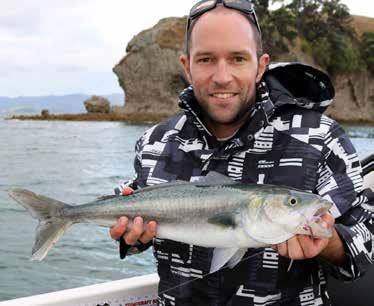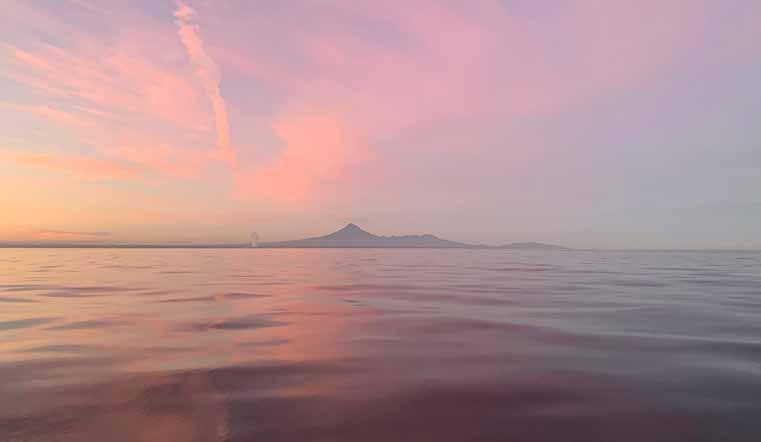LEGASEA ANNUAL REPORT 2019-2020 SAM WOOLFORD On the 25 March New Zealand our world changed, as we know it. Covid-19 created a rapid rise in unemployment, this in turn highlighted the daily struggle of many families to put food on the table. In just a few months our Kai Ika Project has taken on new relevance. The unfortunate reality, food security was an issue in New Zealand long before Covid-19 and it will remain long after. This is also part of the reason we made the decision to launch Rescue Fish, an alternative to the Quota Management System. Rescue Fish is intended to create a strong governance structure to support sustainable management of our marine resources and enable the environment to regenerate and for New Zealanders to benefit from the resulting abundance. As a country we are reliant on abundant coastal fisheries to provide for our social, economic and cultural wellbeing. For us to prosper we need to put the health of our marine environment first. This begins by removing the dysfunctional QMS. RESCUE FISH After two years of development Rescue Fish was successfully launched in May 2020. Rescue Fish is an alternative to the Quota Management System that seeks to better manage the inshore marine environment and fish stocks. It is a policy reform package that has comprehensive solutions to many of the challenges we currently face, including addressing fish depletion and biodiversity loss. WHAT DOES RESCUE FISH MEAN? Radical changes are required. Firstly, the Quota Management System has to go and be replaced by a more agile regime that encourages artisanal fishing, regional jobs, economic growth and more fish in the water. With the QMS gone small-scale fishers will no longer have to pay rent to quota owners nor receive a fixed price for their catch. They will be empowered to innovate. Fishing permits will be priced so they can afford to find new, low impact ways to catch fish of the highest quality. They
16 | NEW ZEALAND SPORT FISHING COUNCIL INC.
could even sell fish direct from their vessel, providing locals with the freshest catch. The possibilities are mouth-watering. Another commitment is to ban mobile, bottom contact bulk harvesting methods such as trawling and dredging, and purse seining in our inshore waters. Inshore waters are those out to 12 nautical miles from the coast, or waters out to 200 meters deep, whichever is furthest from shore. Change starts with the Government buying back all existing commercial quota shares in the inshore fishery, at fair value. The estimated buyback cost is between $0.76 and $3.1 billion, with a mid-point of $1.67 billion. This cost is recoverable from the future sale of commercial fishing permits and will eventually provide an income stream to the Government for the benefit of all New Zealanders. THE KAI IKA PROJECT ‘He ika he taonga’ – The gift of fish. This project utilizes fish heads, frames and offal that were previously going to waste. For many, these fish parts are prized for their sweet flesh. Since November 2016, over 100,000 kilos of previously discarded fish parts have been collected from the OBC and Westhaven Marina then redistributed to families around South Auckland. As the supermarket shelves were emptied during the Covid-19 crisis community resilience and food security suddenly took on new relevance. It quickly became apparent that our Kai Ika Project was going to be important to supporting whanau through that time. However, it was also a period when all noncommercial fishing was restricted. At the most crucial time we were unable to source any fish. Thankfully this impasse didn’t last long. The community rallied: Moana New Zealand and later Sanford Ltd began donating fish parts for distribution. Foundation North provided emergency stimulus funding.
2021






